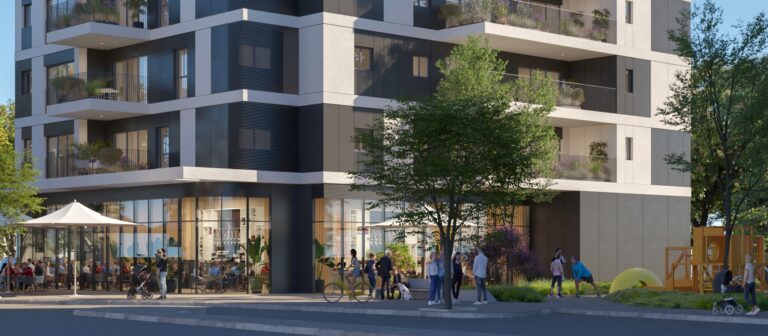The historic neighborhood is reinventing itself as a relevant way of life. What are the leading criteria for successful neighborhood planning It seems that urban planning in the 21st century also drives the complete experience of urban community life.
Urban life is being renewed with neighborhood living culture, which has become a central part of quality of life. While in the past we were used to living in one place, shopping elsewhere, and traveling by private car everywhere, today new approaches lead urban planning, which largely relies on creating a distinct neighborhood identity. This identity benefits from a smart integration of residential, commercial, and urban services, while also offering a holistic lifestyle based on society and community.
How do you build a neighborhood?
In recent years, the neighborhood has gained a prominent place in urban planning. The living space of the 21st century offers a variety of services, community activities, and shopping complexes within walking distance from home. Another significant aspect is the mixed-use development that has been integrated into residential buildings, allowing residents to enjoy a diverse commercial floor, alongside essential services like a clinic or a local gym.
The shift from a global approach to a local lifestyle gained significant momentum due to the global COVID-19 pandemic, which led to trends such as hybrid work and proved that it’s possible to live, learn, and work without taking the car out of the parking space. It is clear that urban sustainability concepts support this approach, with strong local authorities even encouraging greener transportation infrastructure, such as bike lanes, pedestrian bridges, and full accessibility to efficient public transport.
Living, Society, Community – Agility is the name of the game
Urban planning in Israel is also influenced by global trends, which recognize the advantage of flexible planning that adapts to the needs of the community and allows for the creation of a diverse urban space that is open to changes. The first step in establishing a neighborhood is the approval of the detailed building plan (TBA) – the legal document that defines the land’s use and building rights. After approval, the phase of building public infrastructure begins, including electricity, water, sewage, and an efficient transportation system. At the same time, land registration in the land registry (Tabu) is carried out, and the detailed development plan is set in motion.
Successful urban planning is based on reviewing and understanding the daily needs of future residents, from educational institutions to green spaces – which have become part of the quality of life due to the shade and temperature reduction they provide in the urban environment. At the core of the design will always be a framework of thoughtful mixed-use, alongside public institutions and urban services. Simultaneously, planners will enable adaptability of the neighborhood fabric, with the possibility of future expansion of areas, alongside the establishment of transportation infrastructure that will suit the growing population.
The neighborhood offers a new social fabric.
The city, once considered a symbol of alienation, has recently proven itself to be a supportive community space, reflecting neighborly relations on various levels, from social gatherings to help with children and support for elderly residents. As a result, residential complexes are being designed with an understanding of the need for connection and belonging. A prime example of this is the residents' clubs, which have become an integral part of urban renewal projects.
Examples of such projects can be found in Blue Square Real Estate's renewal complexes, which promote the new urbanism with shared floor spaces. Some of these spaces are dedicated to hybrid work, while others are designed for health, fitness, and recreation, such as a yoga hall, meditation room, or shared gardens within the space, creating community areas organically.
The neighborhood identity is also supported by the design of commercial spaces, tailored to the target population. Clothing stores, a neighborhood supermarket, alongside a bakery and boutique store – all will be customized for the future residents, with a business mix that provides an efficient and precise solution.
The new approach to urban living offers a balance between the private and community aspects, with a new value proposition for quality of life – including all services in one place, alongside a comprehensive social fabric. Advanced urban development leads the creation of the next generation's living space, integrating all the needs of a modern lifestyle.




